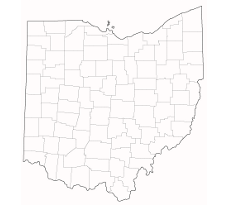
Largest City - Columbus
Population - 11,542,645
Timezone - Eastern Time
Study in Ohio
While some students cite challenges in finding new and exciting ways to spend their recreational time in the state of Ohio itself, they are also quick to point out the benefits of a relatively low cost of living. International students interested in studying in Ohio, therefore, should count as a benefit the potential for an increased amount of expendable income (spending money)!
With cost of living in Ohio being lower than the national average, international students studying and living in Ohio can use their disposable income to explore not only what this centrally located state has to offer, but also the great offerings of the neighboring states of Indiana, Kentucky, West Virginia, Pennsylvania, and Michigan. With many of these states boasting some of the premier schools in the country, Ohio can prove a wonderful transitional state for international students looking to explore, save some money, and acclimate to the United States for some time prior to entering a rigorous, more long-term academic program commitment in their prospective field of study. International students studying and living in Ohio can enjoy a productive and active lifestyle while actually saving some money, unlike their peers in more popularly traveled states. In fact, Ohio's cost of living is nearly 23% less than the nearby state of Massachusetts, and 35% less than the state of California!
Another bonus for international students interested in studying in Ohio is the significant number of technical and professional specialty schools to choose from in this area. This includes many schools with a primary focus on Architecture, such as the University of Cincinnati College of Design, Architecture, Art, and Planning, University of Cincinnati School of Architecture and Interior Design, Kent State University College of Architecture and Environmental Design, Miami University Department of Architecture and Interior Design, and the Ohio State University Austin E. Knowlton School of Architecture. There are also a significant number of the following academic program types: Business, Dentistry, Education, Journalism, Law, Medicine, Nursing, Optometry, Pharmacy, Psychology, Public Health, and Veterinary Medicine.
If you need additional funding to study in Ohio, explore financial resource options like scholarships and loans.
Of course, international students interested in studying in Ohio also have several public and private universities to choose from within this great state. One option to explore, especially if interested in an education degree, is the University of Dayton as their Early Childhood Education program is nationally ranked and accessible online. Students are able to obtain their license, BSE, and MSE from a program that excels in its field.
Ohio bears a humid continental type climate, for the most part (arguably a decent climate range for international students to transition to and from). Ohio experiences moderately warm and humid summer months and typically cold winter months. That said, this state is not immune to severe weather, which can come in the form of lake-effect snow storms (such as those produced off Lake Erie), tornadoes, and (occasionally) earthquakes and earthquake tremors. International students living and studying in Ohio, especially those unfamiliar with the first-hand experience of such severe weather phenomena, should make a point to learn what to expect in such conditions, as well as safety procedures and protocol followed in the event of such weather conditions. International students interested in studying in Ohio are also encouraged to research unique economic and environmental challenges currently being faced by this state, in order to assist in making the most informed decisions concerning your study abroad experience.
For more information and to search schools to study in Ohio, and to contact them for free for further information, please visit the Study in the USA School Search.
